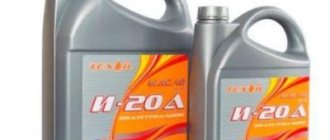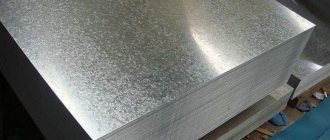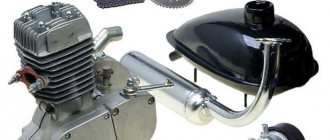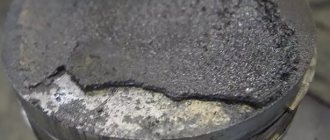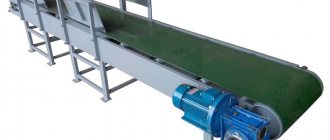Industrial oil I 40 was developed using primitive crude oil distillation technology. However, despite the simplicity of the formula, the lubricant has high performance characteristics, which has become the reason for its widespread use in industrial equipment. The finished liquid is categorized as alloyed lubricants made from sour petroleum. For the consumer, the product is presented as a distillate. Distillation technology involves the use of a selective method of purifying raw materials.
Scope of application
One of the key features of the spindle is the ability to maintain its technical and operational properties for a long time at operating temperatures in the range from 50 to 60 °C.
It can also withstand a short-term jump to 100–120 °C without losing its qualities. But prolonged or too frequent high-temperature conditions lead to oxidation of the oil and deterioration of its properties, so for such conditions. Other distinctive features of this type of industrial oils include:
- low cost and ease of production;
- stability of the viscosity index (its moderate change as operating temperatures increase);
- decent level of protection of components from friction and corrosion;
- increased level of cleanliness;
- compatibility with alloyed lubricants of identical viscosity.
The spindle is used as a working fluid in hydraulic systems of industrial machines and mechanisms designed for high-speed operation at low loads and above-zero temperatures. In addition, it is used to lubricate spindle units, bearings, bushings, and gears.
The spindle is used a little less frequently in measuring instruments, but in this area its main competitor is alloyed industrial oils of similar viscosity.
Another option for using spindles in industry is as a raw material base in the production of more viscous or alloyed mineral oils with additives. Spindle-based lubricating-cooling emulsions are actively used when cutting materials.
The spent spindle is used to prepare mixtures used in hardening and bluing of steel, processing metals with abrasives in an oil environment, and for preserving finished rolled metal products. And in everyday life, a clean spindle is indispensable when processing moving parts of sewing machines, lubricating door hinges, locks and other small moving structures that require protection from corrosion and wear, but do not experience heavy loads.
Advantages and disadvantages of I-40A oil
The product described has many positive characteristics and capabilities. Due to the ease of manufacture and some versatility, many consumers prefer this particular composition. The main advantages include the following:
- Economical consumption and affordable price. The average cost of lubricant is from 80 rubles per liter.
- The oil can be easily replaced with other compounds, while the quality will remain the same.
- Long period of work. The oil does not separate because it contains no additives. The product “ages” gradually until it finally becomes unusable under the influence of severe load and temperature.
- The service life can be extended if additional filters are installed to clean the product.
- Excellent resistance to oxidation. Even moisture entering a liquid cannot cause a change in its composition.
- Providing reliable anti-corrosion protection. All elements of the system are covered with a smear and are not susceptible to negative environmental influences.
- Wide operating temperature range and chemical neutrality. The oil maintains its quality even at high or low temperatures, and also does not have a negative effect on rubber and plastic parts.
The above can be supplemented by the fact that the product sometimes becomes the basis for the creation of other oils with intermediate viscosity. Among the shortcomings, one can point out the high competition in the fuel and lubricants market, since today there are many higher quality and more versatile compounds.
Application
Industrial oils with a complex of additives (anti-oxidation, anti-wear, anti-corrosion, etc.) are used to lubricate bearings, sliding guides, gearboxes and fill hydraulic systems of industrial equipment.
In contrast to transport, low-viscosity oils with a minimum of additives are widely used - for lubrication of moving parts of measuring instruments, textile machines, etc. or, conversely, relatively thick, highly adhesive oils for open components such as chain drives, clamping mechanisms of machine tools
For sliding guides and hydraulics, “anti-jump” additives are specific, preventing jerks when the pair starts moving; this is important for increasing positioning accuracy and eliminating vibrations when moving low-speed components.
Cheap, used or regenerated industrial oils are used in the operations of hardening (for cooling) and bluing (as impregnation of a porous oxide film) of ferrous metals. Processing with abrasive powders - grinding, lapping, polishing - is also often carried out in oil, usually cheap mineral oil, that is, industrial grades.
- Spindle oil - application
Oil is used for preservation and packaging (oiled paper) of finished metalworking products, but in this area it is actively being replaced by special “sticky” lubricants and polymer films.
Emulsions based on industrial oils, water and emulsifiers are used as lubricating and cooling liquids when processing materials by cutting, in construction for lubricating the formwork of concrete structures, and for lubricating leather.
An example of industrial oil is sewing machine oil.
Where is I-40A industrial oil used?
The lubricant is sold in different forms, but it is most profitable to purchase it in 50-liter barrels. For an industrial enterprise, this is a good way to save money, and for a retail outlet, it is an opportunity to sell the composition for bottling. Due to the presence of certain technical characteristics, I-40A oils are considered almost universal.
The lubricant can be used for different components and assemblies. The main direction in using the product is to provide anti-friction protection. A lubricant composition with these parameters can be used as follows:
- in gearboxes with low and medium loads, since under heavy loads the lubricant will be squeezed onto the surface;
- in gear-type manual transmissions, except for automobile gearboxes;
- at sliding or rolling angles (rails, guides, medium-weight roller platforms).
Hydraulics can be mentioned as an additional direction in the use of I-40A lubricant. The oil can be poured into cylinders and used in power systems. Here it is important to take into account the presence of tolerances and the exclusion of conditions when the lubricant may lose its structure.
Production of spindle oil
There are two ways to obtain a high-quality spindle according to GOST.
- Pure distillate base. In distillation apparatuses, under conditions of high vacuum, fuel oil (from oil) is sublimated under the influence of high temperature. There are virtually no sulfur fractions. The quality of this oil is very high, and the cost is quite affordable.
- A mixture of distillation product and residual raw materials. In order to reduce the cost of production, deasphalted tar is used. The base is sulfurous or low-sulfur (depending on the proportions of the residual raw materials). This oil is used without restrictions to lubricate unloaded mechanisms. But for high-speed components and hydraulics, it is not suitable.
Packaging is traditional: from liter bottles to 200 liter barrels. For domestic use (door hinges, sewing machines, etc.) compact oilers are provided.
Spindle oil produced according to specifications
In addition to GOST products, oil refineries produce spindles according to TU 38.1011232-89. In order not to force the buyer to read the parameters on the label, this type of oil is produced in a separate group “AU”.
This is an economy class product, which does not prevent its wide distribution. It is produced from low-sulfur and sulfur paraffinic petroleum products. To separate the base from the raw material, hydrogenation is used.
Despite the fact that the AU series spindle is an independent product, ready for use, it can be used as a raw material. Other lubricants of improved quality are produced on its basis.
In its pure form it is used mainly for lubrication of lightly loaded components and mechanisms. At operating temperatures from -35° to +90°, it is used as a working fluid for hydraulic drives. This limits the scope of application, but at the same time allows for savings.
The kinematic viscosity of such a lubricant is 16-22, this indicator does not even reach spindle oil according to GOST: I-20A. In addition, the oil of the AU series hardens strongly at sub-zero temperatures. Another drawback is the low flash point - 167°. This imposes additional restrictions.
Features of choosing spindle oil
When choosing a spindle for lubrication of mechanisms and use as a working fluid for hydraulic drives of machines, it is important to consider:
- operating conditions (the pour point depends on this);
- viscosity values at normal, highest and lowest operating temperatures (determined using special nomograms);
- maximum temperature in the working area (flash point should be higher than this indicator).
As pressure increases, the spindle becomes more viscous (Table 5), which can cause equipment malfunctions.
| Pressure, MPa | Viscosity increase, % | Pressure, MPa | Viscosity increase, % |
| 7 | 20…25 | 100 | 5 times |
| 15 | 35…40 | 200 | 20 times |
| 20 | 50…60 | 300 | 60 times |
| 50 | 300 | 350 | 120 times |
To quickly determine the dynamic viscosity of spindle oil at different operating pressures, a nomogram is used:
Industrial oil i-40a (i-40): technical characteristics, GOSTs and cleaning
If spindle oil is used in high-pressure hydraulic systems or friction units with large specific loads, its viscosity is calculated using the formula:
where υp and υ0 are indicators of dynamic viscosity at pressure (p) and atmospheric pressure (0), respectively; α is a constant coefficient for a given brand.
Due to heating during equipment operation, the oil becomes less dense, which is why it may leak and reduce the power of hydraulic drives.
Product Features
I-40 belongs to the class of lubricants for industrial use, obtained from oil with normal or low sulfur content, using selector cleaning. GOST 20799-88, which regulates the production of industrial lubricants, is responsible for the quality of the product. The I-40 variety, labeled as I-40A, excludes mechanical and non-mechanical impurities from its composition, and therefore can be used in a wide range of technological units.
Download GOST 20799-88
Characteristics of I-40:
- From 55 to 74 mm2/s kinetic viscosity of oil at a temperature of 35 degrees Celsius.
- Acidity is not higher than 0.04 mgKOH/g.
- Ash content is not higher than 0.01%.
- No impurities.
- Oil element density up to 880 kg/m3.
- The minimum possible operating temperature is up to -15 degrees Celsius.
- The maximum temperature at which a spark is emitted is more than 200 degrees Celsius.
- Resin increment is no more than 3%.
- No solvents in the composition.
Properties of I-40 oil
According to technical characteristics, I-40A oil, like other industrial lubricants, should not contain impurities in its composition in accordance with GOST 20799-88. The absence of foreign components guarantees both the reliability of use of the oil itself and the long life of technical equipment components. However, overly harsh operating conditions, such as exceeding normal temperatures and pressures, can lead to oil oxidation.
The letter “I” in the product name indicates that it belongs to industrial liquids. And not for nothing. Recently, due to confusion in markings, a new GOST was organized under the number 17479.4-87, which includes all the main characteristics of oils intended for servicing industrial units and equipment and prescribed by international standards with the coding ISO 3448-75 and ISO 6743/0-81, thanks to which The letter “I” became the official designation of industrial oils.
Download GOST 17479.4-87
By default, I-40A oil is applicable for widespread mechanisms such as machine tools, where I-40A is used to service the hydraulic system of the machine. It is also popular among automatic lines, mechanical and hydraulic presses.
I-40 oil in packaging
Previously, there was no system classifying industrial liquids on the territory of the Russian Federation. The division took place into two groups: for general and special purposes, which in turn were distributed according to kinetic viscosity upon reaching temperatures from 50 to 100 degrees Celsius.
The maximum temperature of 140 degrees Celsius and the density of I-40 oil allow it to be used in technical units exposed to high temperatures. However, you should not use it in units that operate at low temperatures, since I-40 hardens at a temperature of -15 degrees Celsius.
The dangers of industrial oils for humans and the environment
Subject to the rules of transportation and storage in accordance with GOST 1510, the warranty shelf life of industrial oils is 5 years from the date of manufacture. Further, their use is allowed after quality control in accordance with GOST 20799-88.
According to GOST 12.1.007, the danger of industrial oils for the human body depends on the maximum permissible concentration. (maximum permissible concentration of hydrocarbon vapors in the air of the working area): at maximum permissible concentration of hydrocarbon vapors. = 300 mg/m3 they belong to the 4th hazard class, with MPC r.z. = 5 mg/m3 – by the 3rd.
Used lubricants belong to industrial waste of the 3rd hazard class, and therefore require specialized disposal or processing.
What is a spindle in relation to modern lubricants?
Based on the historical definition, it becomes clear that spindle oil is nothing more than an industrial lubricant. The listed applications also correspond to modern technologies. And filling the hydraulic cylinders of gun carriages is the work of hydraulics in modern mechanisms.
Where does the term "spindle" come from? One of the first uses was to lubricate the spindles of industrial textile machines (hence the name). Initially, vegetable oils and tar were used, but such a lubricant did not withstand prolonged use at high speeds.
It was necessary to stop the weaving machine and completely replace the technical fluids and clean the friction bearings. This slowed down the process and reduced labor productivity.
Turbine oil TP-22s: technical characteristics, GOST and cleaning
With the advent of the spindle, the problem was eliminated. New oil was poured in for a long time, did not change its properties due to overheating, and could be replenished directly while the machine was operating.
When used with modern industrial oils, it is a product of distillation of tars, without the addition of thickeners and additives: accordingly, it has a low viscosity coefficient. The entire range of industrial and hydraulic oils, including the popular I-20A, fits these characteristics. However, the viscosity of spindle oil has a certain range of values. If you believe the marketing classification, the concept of “spindle” includes such industrial oils as I-20A, I-40A, I-50A.
Manufacturers, on the one hand, refer to GOST-20799-88, and on the other, use the traditional name on the packaging. Buyers, not knowing for sure what spindle oil is, use it for other purposes. In this case, irreparable damage is caused to the lubricated mechanisms, and the hydraulics cannot withstand the normal load.
General advice when choosing oil
You should not pay attention to age-old traditions, historical references, and advice from “experienced” mechanics. The formula: “I’ve been pouring spindles into any units for 50 years, and everything works like a clock...” may not work on modern equipment
Let's look at the characteristics of spindle oil under various indices (I-20A, I-40A, etc.).
- I-20A: kinematic viscosity 25-35;
- I-40A: kinematic viscosity 51-75;
- I-50A: kinematic viscosity 90-110.
These oils are used as a working composition in hydraulic systems of construction and road equipment, heavy processing machines, presses, and forging hammers.
In addition, the additive-free, low-viscosity oil is excellent for lubrication of gear drives under light to medium loads. Provided that the spindle is constantly supplied to the working area, it can be used for guides in sliding devices.
There is a direct and inverse relationship between application and viscosity.
- high viscosity – more load, less speed;
- low viscosity – medium and lightly loaded mechanisms, high-speed mechanisms.
Operating parameters of the lubricant
Industrial I-40 A oil has the following technical characteristics:
- kinematic viscosity at plus forty degrees – 51-75 sq. mm/s;
- acidity index – less than 0.05 mgKOH/g;
- concentration of ash elements – less than 0.01 percent;
- foreign particles – absent;
- density – 890 kg/cubic. m;
- freezing temperature - minus fifteen degrees;
- flash point - plus two hundred degrees;
- solvents – no;
- increase in acidity index – 0.4 mgKOH/g;
- increase in resin content - three percent.
Manufacturers I-20A
Today, I-20A oil is produced by many oil refining companies, since there is a steady demand, and the production of oil is quite cheap.
Main manufacturers in Russia:
- Bashneft-Novoil. The company is located in Ufa and produces a variety of oils, including I-20A. The quality of the products, according to reviews, is good, the prices are quite competitive;
- Rosneft. The headquarters of this company is located in Moscow, and oil refineries are located throughout Russia. Among other things, the company also produces oils, among which is I-20A;
- Lukoil. It is one of the leading oil companies in Russia and exports its products to 24 countries. The company's product range, of course, includes the I-20A brand. The quality is consistently good;
- Gazprom Neft. The company has its own production facilities, in addition, it sells raw materials to many factories, both in Russia and abroad. The quality is excellent, the prices are a little high.
Advantages
Due to the simplicity of the composition and versatility of characteristics, consumers often prefer this particular product.
- Economical. This is the most inexpensive option compared to competitors that have redundant characteristics, but are nevertheless included in the price.
- The oil can be replaced with other compositions, while the quality characteristics remain unchanged.
- Duration of work. Due to the absence of additives, I-40A industrial oil is not subject to separation. The natural structure of the composition slowly ages if temperature and load operating conditions are not violated.
- The ability to extend the service life by installing filter stations to purify the material.
This can be a mobile installation, or a filtration system during operation. Important: 100% restoration of performance characteristics after cleaning is not guaranteed. Only the separation of mechanical impurities and mud suspensions occurs. - High resistance to oxidation. Even if a small amount of moisture gets in, the basic characteristics of the product do not fundamentally change.
- Reliable anti-corrosion protection. Internal and external components coated with oil (or immersed in it) are not exposed to water and other liquids with an average degree of chemical aggressiveness.
- A wide temperature range of use allows you to work with these oils in hot climates and moderate frosts. This property is used when operating I-40A in road and construction equipment.
- Chemical neutrality. When interacting with I-40A oil, rubber and plastic seals are not damaged. Personnel working with this composition do not require special protective equipment: if the oil gets on exposed skin, use household detergents.
- Industrial oil I-40A can be used as a base for creating other oils with intermediate viscosity.
The main competitive advantage is a wide range of domestic products. As a result, low cost: there is no need to purchase foreign (more expensive) analogues.
